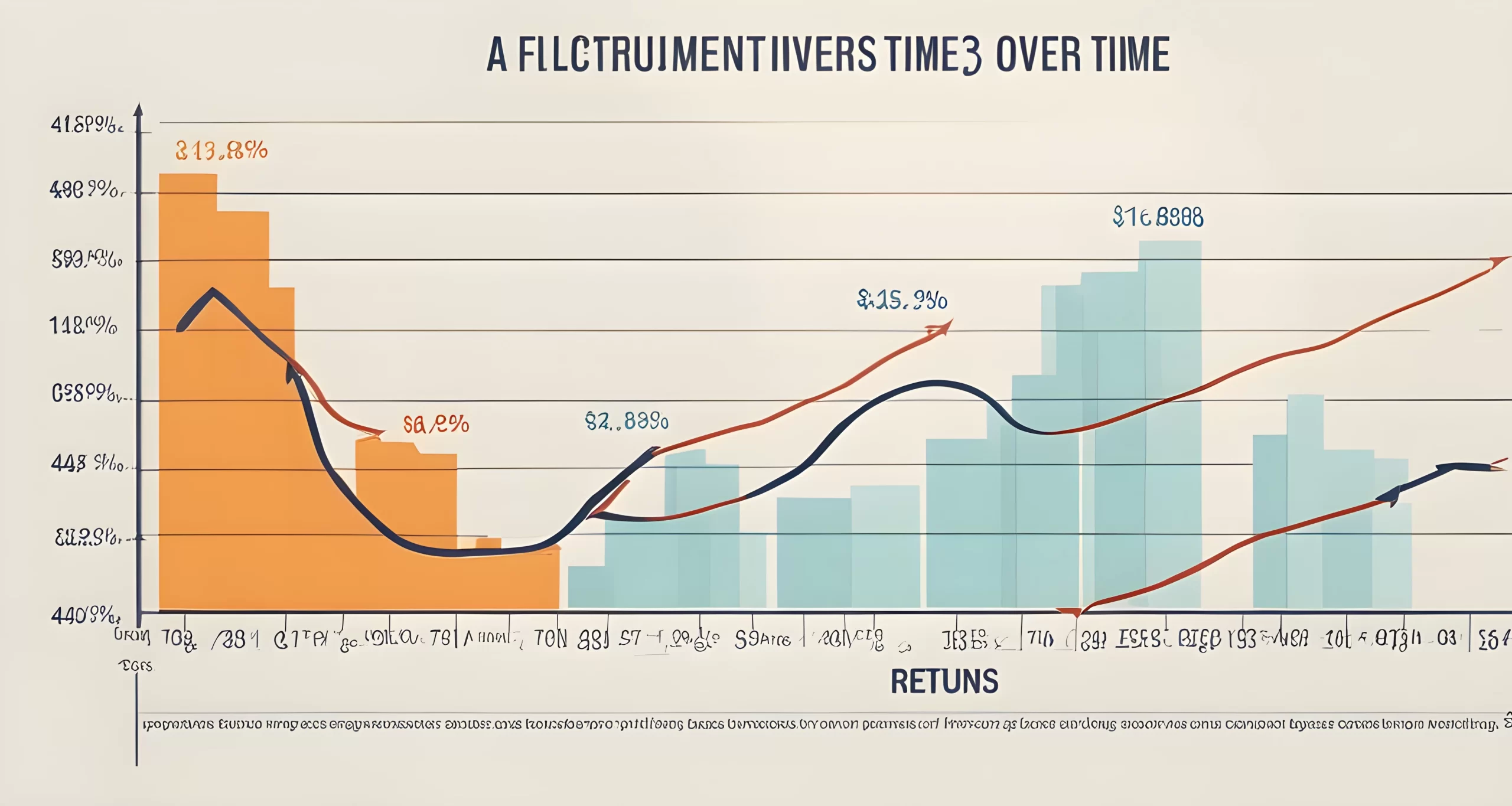Analytic Tools for Addressing Uncertainty
In the realm of investment management, the challenge of uncertainty is ever-present and requires a multifaceted approach to address. One crucial aspect of this approach involves the use of appropriate analytic tools tailored to the level of uncertainty faced by organizations.
In highly uncertain business environments, traditional analytic tools such as market research, value chain analysis, and assessments of rivals may not be sufficient. Instead, companies should apply analytic tools based on the level of uncertainty facing their organization. For instance, if there are only a few alternative futures, option valuation models and game theory can be used to establish relative probabilities of each outcome and gauge alternative strategies. This approach can provide valuable insights into potential outcomes and assist in making informed decisions amidst uncertainty.
Furthermore, in situations where there is a wide range of possible scenarios, technology forecasting and scenario planning can be employed to develop multiple scenarios characterized by different variables such as customer-penetration rates and latent-demand levels. This allows investment managers to consider a broader range of possibilities and anticipate potential challenges or opportunities that may arise.
For more detailed insights into maximizing investment returns amidst uncertainty, refer to Maximize Investment Yield.
By utilizing these analytic tools, investment managers can gain a deeper understanding of the potential outcomes and risks associated with their investment decisions in uncertain environments. This allows for more informed and strategic decision-making that takes into account the complex dynamics of the market and the various factors at play.
Overall, leveraging appropriate analytic tools tailored to the level of uncertainty can provide investment managers with valuable insights to navigate complex and unpredictable market conditions, ultimately leading to more effective risk management and investment strategies.

Strategic Postures in Highly Uncertain Environments
In highly uncertain environments, companies need to carefully consider their strategic postures in order to navigate the dynamic and unpredictable nature of the market. There are a few different approaches that companies can take when it comes to shaping their strategic postures.
Shaping the Future
One option for companies is to shape the future by driving their industry toward a new structure of their devising and creating new opportunities. This involves taking bold and innovative steps to change the industry landscape, which can be risky but also highly rewarding in terms of potential growth and competitive advantage.
Adapting to the Current Industry Structure
Alternatively, companies can choose to adapt by deciding where and how to compete within the current industry structure. This approach involves carefully assessing the existing market conditions and making strategic moves to position the company for success within the given constraints.
Reserving the Right to Play
Some companies may also reserve the right to play by making incremental investments to stay in the game without committing to a new strategy. This approach allows companies to maintain their presence in the market while keeping their options open for future developments.
Strategic postures are essential in highly uncertain environments as they help companies navigate and respond to the challenges posed by uncertainty. By carefully considering their strategic posture, companies can better position themselves for success and capitalize on new opportunities as they arise.
For more information on maximizing investment returns with strategic planning, check out Strategic investment return optimization.
By incorporating these different strategic postures into their overall approach, companies can effectively address the challenge of uncertainty in investment management and set themselves up for long-term success.

Portfolio Management Techniques for Risk and Uncertainty
In highly uncertain environments, portfolio management techniques play a crucial role in helping companies navigate risk and uncertainty. By strategically balancing big bets, options, and no-regrets moves, organizations can optimize their risk-reward trade-offs and position themselves for success.
Big bets involve major commitments that can lead to significant payoffs or losses depending on how the future unfolds. On the other hand, options represent modest initial investments that can be expanded upon if the future unfolds favorably. Lastly, no-regrets moves are actions that will benefit the company regardless of how the future unfolds.
Navigating financial risk within a portfolio requires a thoughtful approach to managing these different types of investments. It’s not just about making big bets and hoping for the best outcome. Instead, it’s about strategically diversifying the portfolio to include a mix of big bets, options, and no-regrets moves.
By doing so, companies can mitigate potential losses from big bets by having a safety net of option investments that can be scaled up if necessary. Additionally, incorporating no-regrets moves ensures that the company will benefit regardless of how the future unfolds.
This approach allows companies to better manage risk and uncertainty by carefully considering the potential outcomes of each investment within their portfolio. This strategic management of the portfolio helps in optimizing the risk-reward trade-offs and creates a more resilient position for the company in uncertain environments.
Ultimately, portfolio management techniques provide companies with a framework for addressing risk and uncertainty in their investment strategies. By incorporating a mix of big bets, options, and no-regrets moves, organizations can better position themselves to thrive in volatile and uncertain markets.

Adapting to Uncertainty through Strategic Postures
In highly uncertain business environments, the ability to adapt and strategically position oneself is crucial for success. Companies must be able to navigate volatility and rapid changes in the market landscape in order to stay competitive and relevant. This is where strategic postures come into play.
Strategic postures refer to the various ways in which a company can position itself to address uncertainty. This can include shaping the future by making strategic investments and alliances, or adapting to the current industry structure by adjusting business models and operations. By adopting the right strategic postures, companies can effectively manage risk and uncertainty, and ultimately drive long-term growth.
One key aspect of adapting to uncertainty through strategic postures is the ability to balance big bets, options, and no-regrets moves. This involves making calculated and strategic decisions that allow for flexibility and agility in the face of uncertainty. Companies can use analytic tools to assess different scenarios and potential outcomes, allowing them to make informed decisions that position them for success in a volatile environment.
Portfolio management techniques also play a crucial role in adapting to uncertainty. By diversifying their investment portfolios and actively managing risk, companies can better navigate uncertain market conditions. This includes using techniques such as hedging and leveraging different asset classes to spread risk and optimize returns.
In order to effectively adapt to uncertainty through strategic postures, companies must also consider long-term growth strategies. This involves addressing investment concerns and developing a comprehensive approach to managing risk and uncertainty Long-Term Investment Addressing. By taking a proactive approach to addressing uncertainty, companies can position themselves for sustained success in an ever-changing business environment.
Ultimately, adapting to uncertainty through strategic postures requires a combination of foresight, flexibility, and proactive decision-making. Companies that are able to effectively navigate uncertainty will be better positioned to thrive in volatile market conditions and drive long-term growth.

Balancing Big Bets, Options, and No-Regrets Moves
In the world of investment management, balancing big bets, options, and no-regrets moves is crucial for effectively managing risk and uncertainty. Companies must carefully consider potential outcomes and make informed decisions to create a resilient portfolio that can withstand a wide range of scenarios. This balanced approach ensures that companies are prepared for uncertainty and can capitalize on opportunities while mitigating potential losses.
Big Bets
Making big bets in the investment world can lead to substantial gains, but it also comes with significant risks. Companies must carefully assess the potential returns and weigh them against the potential downsides. By diversifying their big bets across different asset classes or markets, companies can spread their risk and increase their chances of success. Additionally, using analytic tools to assess the potential outcomes of these big bets can help companies make more informed decisions.
Options
Options provide companies with the flexibility to adapt to changing market conditions. By incorporating options into their investment strategies, companies can hedge against downside risks while also taking advantage of potential upside opportunities. Strategic postures in highly uncertain environments are essential for effectively utilizing options to manage risk and uncertainty Risk in investment strategy. By carefully selecting the right options and continuously monitoring their performance, companies can ensure that they are well-positioned to navigate uncertainty.
No-Regrets Moves
No-regrets moves are low-risk, high-reward investments that provide a safety net for companies in uncertain environments. These moves may not yield substantial gains, but they also come with minimal downside risk. By incorporating a mix of no-regrets moves into their portfolio, companies can create a safety buffer that protects them from potential losses while still allowing them to capitalize on opportunities.
In conclusion, an effective investment management strategy requires a careful balance of big bets, options, and no-regrets moves. By leveraging these different approaches, companies can create a portfolio that is resilient to uncertainty while also being well-positioned to capitalize on potential opportunities. Adapting to uncertainty through strategic postures is essential for navigating the complex landscape of investment management Risk in investment strategy.
FAQ
What are some appropriate analytic tools for addressing uncertainty in investment management?
Some appropriate analytic tools for addressing uncertainty in investment management include option valuation models, game theory, technology forecasting, and scenario planning.
How can companies shape their strategic postures to address uncertainty in investment management?
Companies can shape their strategic postures by driving their industry toward a new structure, creating new opportunities, or by choosing where and how to compete within the current industry structure.
What are some portfolio management techniques that can help in managing risk and uncertainty in investment management?
Portfolio management techniques such as balancing big bets, options, and no-regrets moves can help companies manage risk and uncertainty in investment management.
What are some examples of strategic postures that companies can adopt to address uncertainty in investment management?
Companies can adopt strategic postures such as reshaping the industry, adapting to the current industry structure, or making incremental investments to stay in the game without committing to a new strategy.
